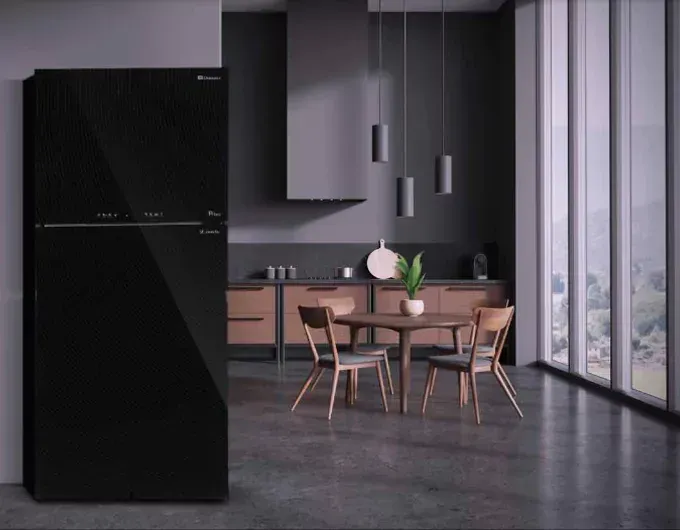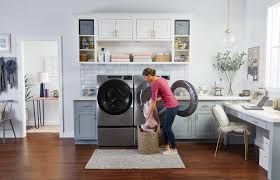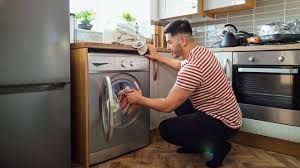How to Repair a Sub-Zero Refrigerator?
Sub-Zero refrigerators are renowned for their superior quality and durability. However, like any appliance, they can occasionally encounter issues that require repair. If your Sub-Zero refrigerator is not functioning properly, this guide will help you troubleshoot and repair common problems. With step-by-step instructions and practical tips, you can tackle a range of issues from cooling problems to water leaks. Armed with the right knowledge and tools, you can extend the lifespan of your appliance and ensure it continues to operate at peak performance. Whether you're dealing with minor glitches or more complex malfunctions, this guide aims to empower you with the skills needed to maintain and repair your Sub-Zero refrigerator effectively.
Safety First: Preparing for Repairs
Before attempting any repairs, it's crucial to ensure your safety. Follow these steps:
- Unplug the Refrigerator: Always disconnect the appliance from the power source to avoid electrical shock.
- Protect Your Hands: Wear gloves to protect your hands from sharp edges and components.
- Use the Right Tools: Gather necessary tools such as screwdrivers, pliers, a multimeter, and replacement parts if needed.
Common Problems and Their Solutions
1. Refrigerator Not Cooling
If your Sub-Zero refrigerator is not cooling properly, the issue could be due to various reasons:
a. Check the Thermostat Settings
- Ensure the thermostat is set to the correct temperature. Typically, the refrigerator should be set to 37°F (3°C) and the freezer to 0°F (-18°C).
b. Clean the Condenser Coils
- Dust and debris on the condenser coils can hinder cooling. Locate the coils, usually at the back or beneath the refrigerator, and clean them with a vacuum or a coil brush.
c. Inspect the Evaporator Fan Motor
- The evaporator fan circulates air throughout the refrigerator. If it’s faulty, the fridge won't cool properly. Open the refrigerator and listen for the fan. If it’s not running, test the motor with a multimeter and replace it if necessary.
d. Check the Start Relay
- The start relay helps the compressor start. If it’s defective, the compressor may not run. Locate the start relay, usually near the compressor, and test it with a multimeter. Replace it if it's faulty.
2. Refrigerator Leaking Water
Water leaks are a common issue and can stem from several sources:
a. Inspect the Water Supply Line
- Check the water supply line for cracks or leaks. Tighten any loose connections or replace the line if it’s damaged.
b. Clear the Defrost Drain
- A clogged defrost drain can cause water to overflow. Locate the drain (usually at the back of the freezer) and clear any blockages with a turkey baster and hot water.
c. Examine the Drain Pan
- The drain pan collects water from the defrost cycle. If it’s cracked or overflowing, replace it.
3. Ice Maker Not Working
If your Sub-Zero refrigerator’s ice maker is not functioning, consider these steps:
a. Ensure the Ice Maker is On
- Make sure the ice maker is turned on and the ice bin is properly installed.
b. Check the Water Inlet Valve
- The water inlet valve supplies water to the ice maker. If it’s defective or clogged, it won’t fill the ice tray. Test the valve with a multimeter and replace it if needed.
c. Inspect the Ice Maker Assembly
- If the ice maker itself is faulty, it may need to be replaced. This involves removing the ice maker assembly and installing a new one.
4. Refrigerator Making Strange Noises
Unusual noises can indicate a problem:
a. Identify the Source of the Noise
- Listen carefully to locate the noise. It could be from the evaporator fan, condenser fan, or compressor.
b. Check the Evaporator Fan Motor
- If the fan motor is noisy, it may need lubrication or replacement.
c. Inspect the Condenser Fan Motor
- A faulty condenser fan motor can cause noise. Clean the fan blades and replace the motor if necessary.
d. Examine the Compressor
- A noisy compressor might indicate a problem. If it’s making loud or unusual sounds, it may need professional repair or replacement.
Advanced Troubleshooting and Repairs
For more complex issues, you may need to delve deeper into the refrigerator’s components. Here are some advanced troubleshooting steps:
1. Checking the Defrost System
A malfunctioning defrost system can cause ice buildup and cooling issues:
a. Test the Defrost Heater
- The defrost heater melts frost on the evaporator coils. Use a multimeter to test for continuity. If it’s defective, replace it.
b. Inspect the Defrost Thermostat
- The thermostat regulates the defrost cycle. Test it with a multimeter and replace it if it's not working.
c. Check the Defrost Control Board
- The control board manages the defrost cycle. If other components are functioning but the defrost system isn’t working, the board may need replacement.
2. Testing the Temperature Control Board
The temperature control board regulates the temperature inside the refrigerator:
a. Locate the Control Board
- The control board is usually behind a panel inside the refrigerator.
b. Test the Board
- Use a multimeter to check for continuity and proper voltage. If the board is faulty, replace it.
When to Call a Professional
While many repairs can be done at home, some situations require professional assistance:
- Refrigerant Leaks: Handling refrigerant requires specialized knowledge and equipment.
- Compressor Issues: Replacing a compressor is complex and often best left to professionals.
- Electrical Problems: If you’re not comfortable working with electrical components, it’s safer to hire a technician.
Maintenance Tips to Prevent Future Issues
To keep your Sub-Zero refrigerator running smoothly, regular maintenance is essential:
- Clean the Condenser Coils: Do this every six months to ensure efficient cooling.
- Check the Door Seals: Ensure the seals are tight and replace them if they’re worn out.
- Monitor Temperature Settings: Keep the thermostat set to the recommended temperatures.
- Inspect the Water Filter: Replace the water filter every six months to ensure clean water and ice.
Long-Term Efficiency
Repairing a Sub-Zero refrigerator can seem daunting, but with the right knowledge and tools, many issues can be resolved at home. By following the steps outlined in this guide, you can troubleshoot and fix common problems, ensuring your refrigerator continues to operate efficiently. Remember to prioritize safety and, when in doubt, seek professional help. Regular maintenance can also prevent many issues, keeping your Sub-Zero refrigerator in optimal condition for years to come.




